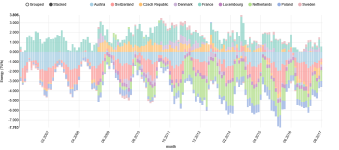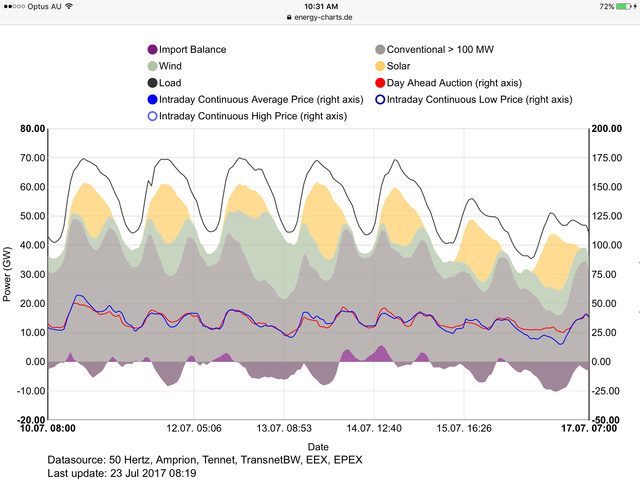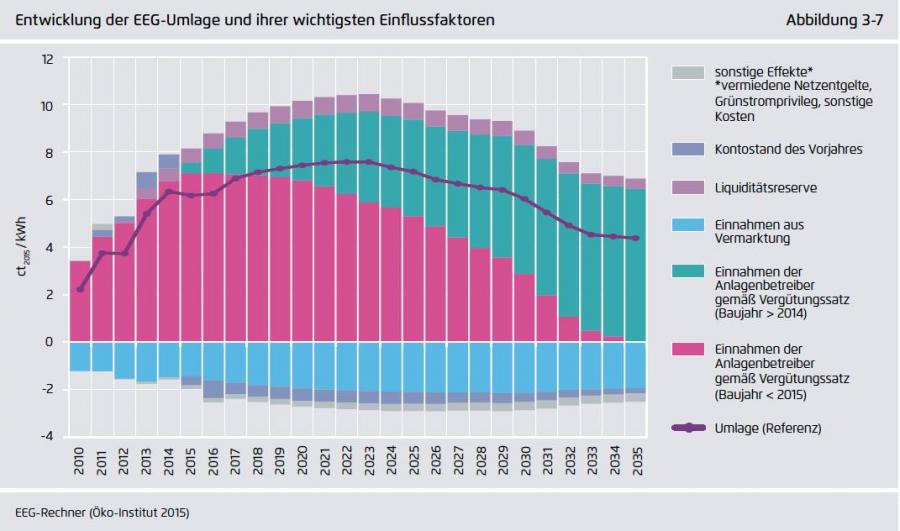Cephalotus said:
Germany installed lots of its wind and solar and biomass capacity when this was much more expensive than today, this is the high reson for the add on tarfif for RE for consumers. (industrial comsumers do not pay that).
There are also lots of taxes on electricity.
Generation cost of electricity and price for industrial users is quite low.
For me as a costumer I do not care a about few cent per kWh more or less. I earn enough money (and most people do) that the electricity price simpley does not matter. I assume that 80-90% of the average people on the street do not even know their tarrif.
In Australia, there has been a large surge past the 100k mark in electricity home disconnections due to folks not being able to stretch their budget that little bit further as electricity prices have increased catching them off guard. And another 100k of households who are on special payment plans or rely on charities to pay for their electricity bill.
http://www.theaustralian.com.au/business/mining-energy/energy-bill-pain-surge-in-household-cutoffs/news-story/007f79822ccfbc63b9033fd61cc9a74c
Australian Energy Regulator figures reveal almost 60,000 households are on electricity hardship payments and another 151,862 customers are on electricity payment plans.
Food handouts increasing with skyrocketing power bills in South Australia
The number of South Australians requiring assistance to access food has increased by 21 per cent over the past year, a charity says, with electricity prices largely to blame.
http://www.abc.net.au/news/2017-10-16/sa-electricity-prices-blamed-for-more-food-handouts/9053426
Simply put, a lot of people do live on the edge, even if you don't, you should be thinking about them, they are real, they exist and they are suffering.
It could be that in Europe/USA allowing people to get cut off electricity is more serious (as people could freeze to death) and even main-stream-media doesn't try to manipulate the masses just because they have the power to do so and this policy and behaviour are quite different.
Maybe if local AU mainstream media played videos like this where Australians could visually see the co2 levels in the southern hemisphere is significantly lower and a large amount disappears in the Northen hemispheres summer time due to photosynthesis they might have a different feeling of urgency. But at the moment MSM makes Australians feel that if they don't get off coal in 1 years time and live off renewables they will die and kill the earth with it and its entirely if not directly their fault and the rest of the world is not to blame.
https://www.youtube.com/watch?v=x1SgmFa0r04
I been looking at direct feeds of political people instead of relying on main-stream-media to give me their interpretation of what they say (something most politicians now recommend, Trump included). Looking at what these put out directly can be a lot more interesting and detailed.
For instance today they talked about Australians NEG plan and how this small bakery/coffee shop transitioned off gas for its bakery and onto pure electricity and its daily power usage was about 403KWh (0.4MWh) per day.
https://youtu.be/O5c758NlFgU (I uploaded it to YT from FB) https://www.facebook.com/malcolmturnbull/videos/10155931542126579/
[youtube]O5c758NlFgU[/youtube]
If this is the model of the future of getting off fossil fuels than there is no way this bakery/coffee shop is going to get that kind of power from his roof and I really do believe that Solar farms will be banished to only the most super ultra dead/dry parts of the world where they can't interfere with nature/co2 sequestration, (excluding roofs of course).
If its going to be half a MWh per day per bakery/restaurant/coffee shop than thats going to be about a $7million dollar 2MW wind turbine installation per premises (with 0.5MWh average power output) and then there is all the battery to smooth it out and the maintenance which seems to hide if anything the largest amount of cost.
You guys have to read these articles again, its
TREES that do co2 sequestration, grass/weeds wont do anything. This is brand new scientific findings and governments around the world are now building policy based on this.
https://phys.org/news/2017-10-nature-vital-climate.html
Article quote
"The Biggest Natural Climate Solution: More
Trees
According to FAO, 3.9 billion hectares or 30.6% of total land area is forest. The researchers found that
trees have the greatest potential to cost-effectively reduce carbon emissions. This is because they
absorb carbon dioxide as they grow, removing it from the atmosphere. The results of the study indicate that the three largest options for increasing the number and
size of trees (reforestation, avoiding forest loss, and better forestry practices) could cost-effectively remove 7 billion tonnes of carbon dioxide annually by 2030, equivalent to taking 1.5 billion gasoline-burning cars off the roads.
"
^ You know why the easiest and greenest and most effective solution will struggle to be taken up? Because there's little money to be made out of it and most peoples minds are at the whim of MSM.
-----------------------------------------------------------------------------------------------------------------------------------------
*ADD*
I have worked in a small kitchen that had an electric oven and its quite similar to this, but smaller than what the bakery oven used in that video.
If you go through to the specs section of the oven it says 34kW power.
So 10 hours of use is 340kilowatts of power used... If you are a decent sized bakery then its easy to see how you would use 403kWh in a day.
POWER 400-415V, 3P+N+E, 50Hz, 34kW
https://www.hospitalitysuperstore.com.au/rotel-bakery-oven-electric-vtl.html#tab-product-view2













